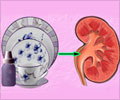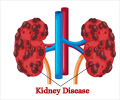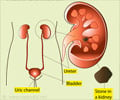A new guideline for the surgical management of patients with kidney and/or ureteral stones has been released by the by the American Urologic Association.

‘A new guideline for the surgical management of patients with kidney and/or ureteral stones has been released by the by the American Urologic Association.’





"The most pertinent change is that decision-making for treatment and therapy for patients with kidney and ureteral stones should be shared between physician and patient," said Assimos, chair of the University of Alabama at Birmingham, Department of Urology. The guidelines further outline expert recommendations in relation to treatment of renal stones, small hard mineral deposits formed inside the kidneys, and ureteral stones, stones that have moved from the kidney to the ureter.
These include:
- imaging and pre-operative testing
- treatment of adult patients with ureteral stones
- treatment of adult patients with renal stones
- treatment for pediatric patients with ureteral or renal stones
- treatment for pregnant patients with ureteral or renal stones
- treatment for all patients with ureteral or renal stones
The guidelines provide instruction on the evaluation of patients with renal and/or ureteral stones and highlight the lab and imaging studies that should be used prior to intervention for such patients.
The technical aspects of ureteroscopic removal of stones are addressed more extensively in the guidelines. The previous guidelines discussed medical expulsive therapy via the utilization of alpha blockers to facilitate the passage of stones in all segments of the ureter. However, the recent guidelines recommend this therapy only for stones in the distal ureter, which is located in the lower part of the kidney. Ureteroscopic removal of ureteral stones may potentially render a patient stone-free in one procedure. In this process, a ureteroscope is used to either extract an intact stone or break it up using a laser with subsequent removal of the generated fragments.
Advertisement
- no ureteral injury during ureteroscopy
- no anatomic obstruction, hindrance or obstacle to stone fragment clearance
- normal function in the opposite kidney and normal renal function
- no plans for secondary ureteroscopic procedure
"In the past, there was a portfolio of guidelines for physicians discussing prevention and treatment in various types of patients with kidney stones," Assimos said. "Evidence has changed over time, prompting an update and the need for more comprehensive guidelines. The panel developed this set of guidelines based on evidence from past clinical trials and studies published in the peer reviewed literature, as well as expert consensus of the physician panelists."
Advertisement















